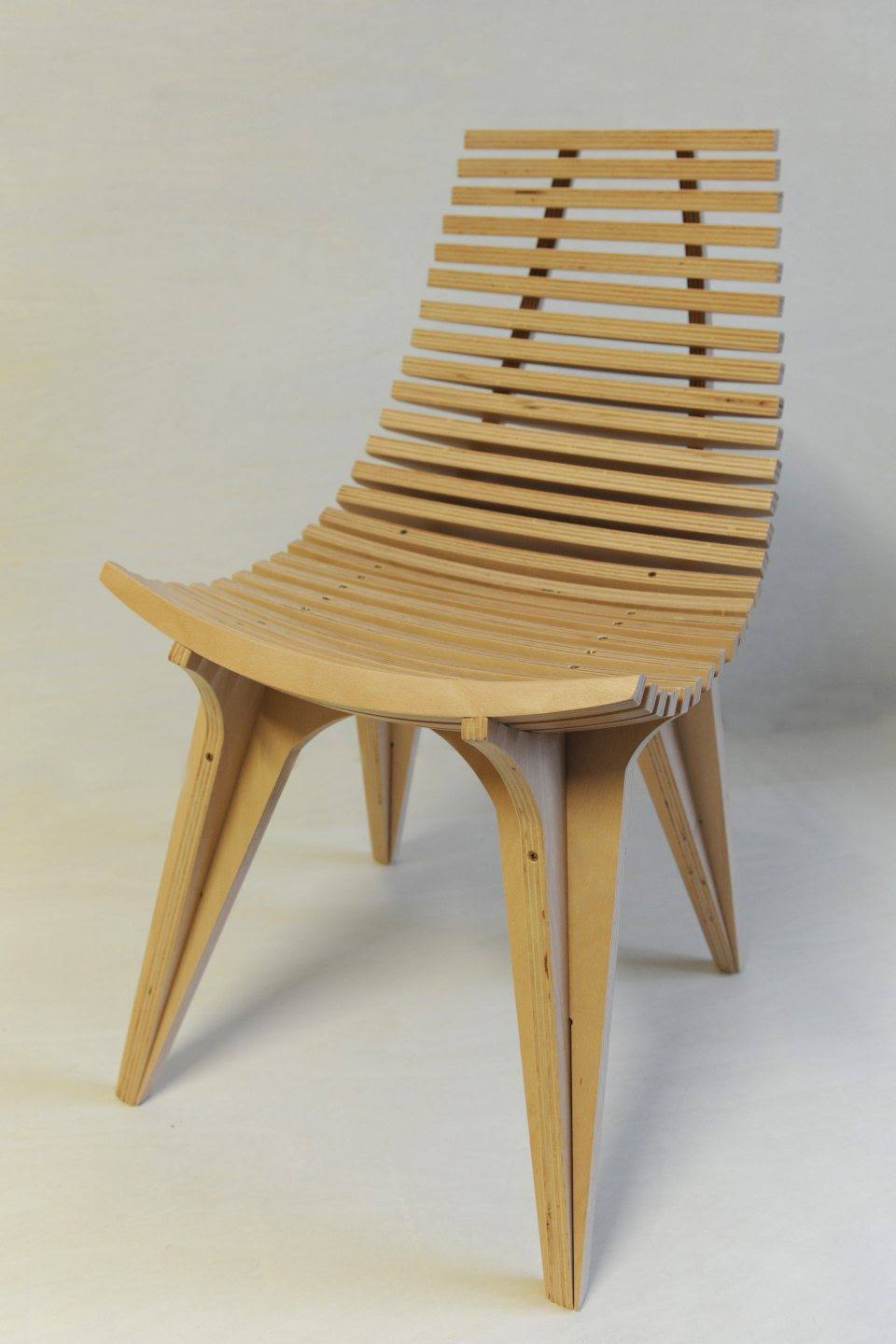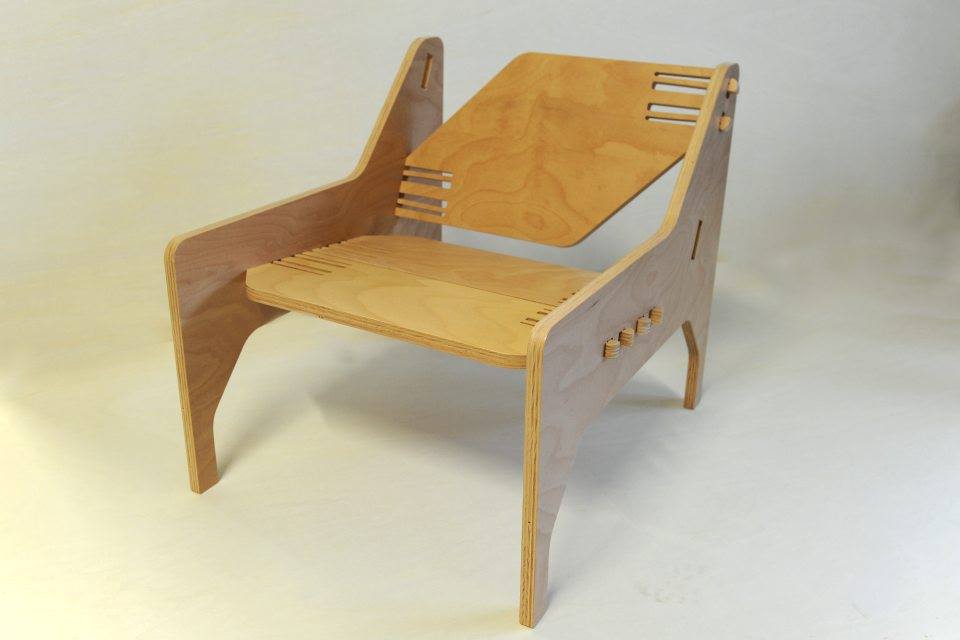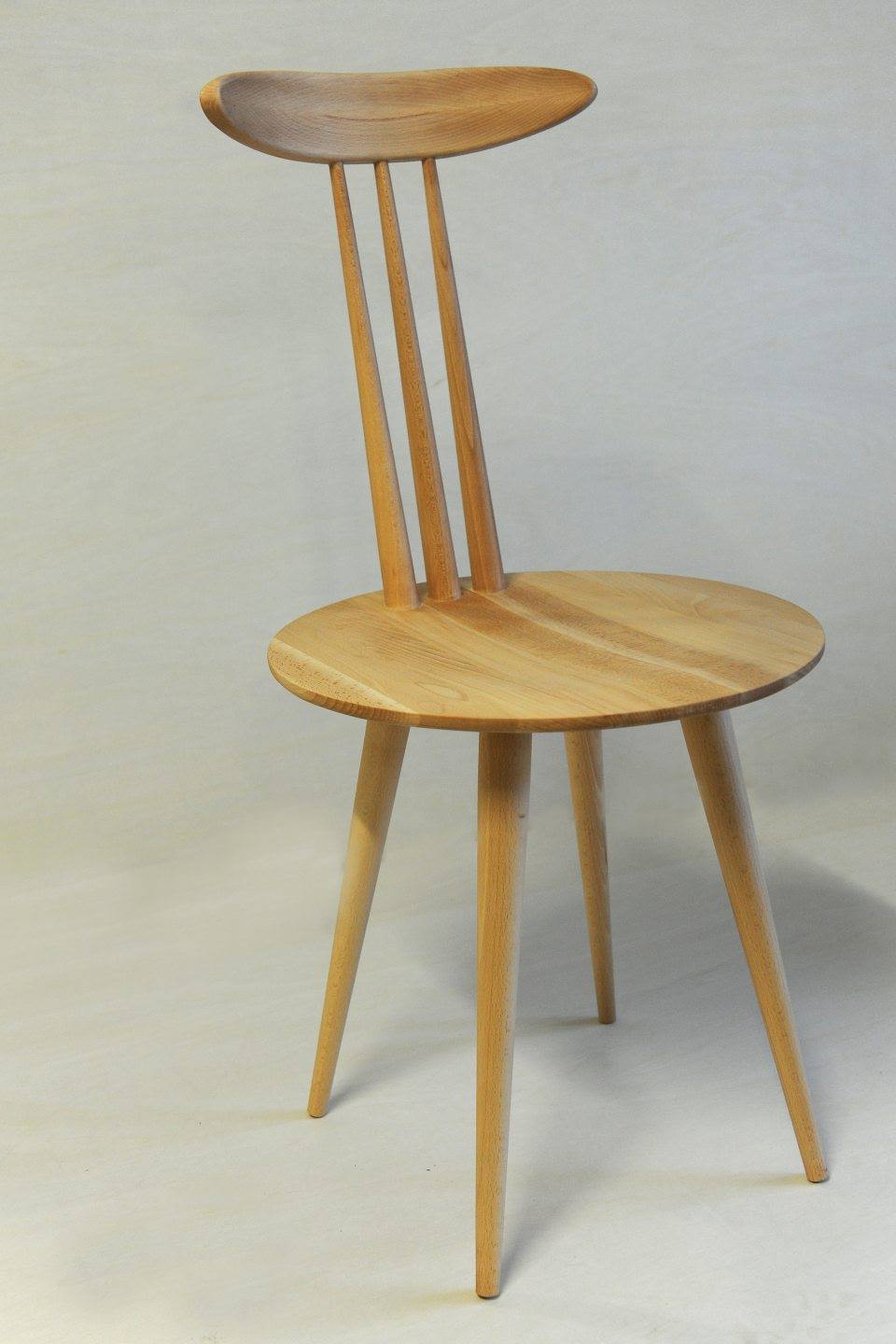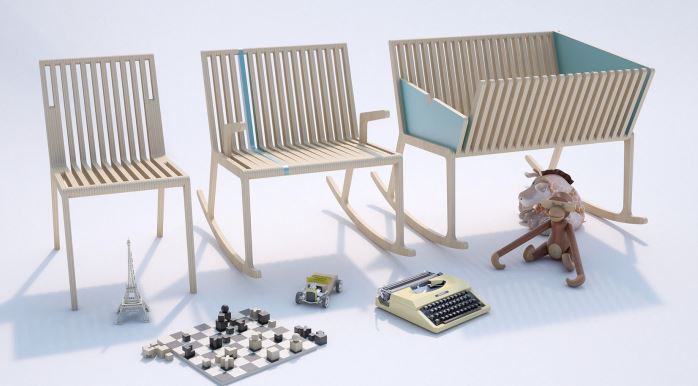Primal chair - 2015

1st PLACE: TADEJA VIDONI, FRAME CHAIR, SLOVENIA
The components of the Frame Chair are designed in a way that offers efficient material utilization. Parts resembling a skeleton are cut from a 20 mm thick board measuring 120x140 cm. The construction consists of 26 parts of the seat frame. Assembled, they line up on two cross members, which together form the legs and backrest. Individual elements and the chair itself are pleasantly anatomically curved, inviting comfortable, ergonomically sound sitting. Assembly is done by simply inserting the elements into the basic frame, requiring neither screwing nor gluing.

2nd PLACE:NOEL FLANNERY, CHAIR, IRELAND
The author transposes a rather conventional and well-known chair shape into a puzzle of five components without any fasteners, glue, screws, or the like. Everything is designed using an 18 mm thick plywood board. Each piece, cut using CNC technology, interlocks with six self-locking joints and assembles into an object of a familiar purpose.
Precision is crucial, which CNC technology, at least in principle, allows for. The proposal for this chair or armchair involves a rational cut of plywood into elements. These elements assemble into a box-like shape, which is already known in the world of chair design (such as the Chair-ov program UNI and Futura prof by Nika Kralj). The cleverly designed joint involves the interlocking of individual pieces, with the wood in these joints acting as a spring clip. The final presentation likely includes sensible upholstery.

3rd PLACE: META MENCINGER, GOZDNI SADEŽ, SLOVENIA
The author very poetically and originally referred to her proposal as a "tribute to the mysterious interweaving, the eyes-hidden threads, without which there would be no forests, trees, or wood – the fungi and their hyphae. They represent the genesis and birth as they accelerate the decomposition of organic compounds in the soil into compounds that trees need for their growth, and in the form of mycorrhiza, their indispensable collaboration with tree roots. Mostly invisible to our eyes, their fruiting bodies appear in warm humid weather in the form of fleshy mushrooms."
The "Forest Fruit" chair combines the strength of wood with a gracefully delicate form inspired by the magical world of fungi always present in the forest. Among all the contributions, this proposal stands out as one of the few that emphasizes the aesthetic or beauty aspect of the product. The manufacturing method is well-known, especially from Scandinavian carpentry production. This is a technique that was once used in our country to make so-called "colonial" chairs. The legs of the chair and the rods composing the backrest are inserted into a relatively thick seat surface. The elegant "Forest Fruit" design is evidently inspired by the slender fungal hyphae, as well as the slim trunks of the bracket fungus. The simple elegance of the chair was decisive in awarding the prize.

SPECIAL MENTION: NATALIJA OTONIČAR, ČOK, SLOVENIA

